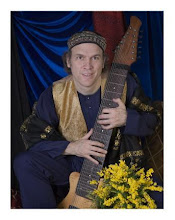Below is the complete text of Statement made by Karamah an organization of Women Muslim Lawyers, which is pretty much self-explanatory. It counteracts the stereotype of irrational insult-sensitive Muslims quite well, I think. They are also doing some really extraordinary and important other work, as you can see by looking at other pages of their website.
KARAMAH was contacted by a number of Muslim organizations, which were concerned about reports of a sculptured representation of the Prophet Muhammad in the historical frieze on the north wall of the Supreme Courtroom. KARAMAH was also asked by these organizations to contact the Supreme Court administrators and discuss the matter.
A KARAMAH delegation visited the Supreme Court and looked at the frieze, one of several honoring a broad spectrum of leading figures in the law, including the Prophet Moses, Napoleon, and the fourth Chief Justice of the United States John Marshall. Contrary to early information, the frieze does not contain an inscription referring to the Prophet Muhammad as "the founder of Islam." That statement appears in a caption prepared by the museum in connection with a miniature replica of the frieze on display there. The statement is repeated in brochures distributed to visitors.
KARAMAH explained to the administrators that for Muslims, the Prophet is not the "founder" of Islam. As an Abrahamic religion, Islam is considered by Muslims as a later revelation of the same message revealed to Moses and Jesus. Supreme Court administrators showed great sensitivity and understanding of the matter. It was readily agreed that the caption would be revised to describe Prophet Muhammad as the "Prophet" of Islam. It will also be revised to refer briefly to the concerns discussed below.
Furthermore, the sculptured figure purportedly of the Prophet, carries what appears to be a Qur’an in one hand and a sword in the other. Some Muslims expressed their concern to us that the sword would reinforce the current stereotype about Muslims as violent. In fact, KARAMAH discovered that throughout the friezes in the Supreme Courtroom and at the entrance of the Supreme Court itself (statue on the Authority of the Law, lamppost on west entrance, base of Plaza flag poles), swords are repeatedly used as a symbol for the protection of law and justice. Based on these facts, KARAMAH has concluded that there is no reason to assume a contrary intention in the case of the Prophet Muhammad.
A more complex issue remained; namely that of the sculptured representation of the Prophet in the frieze. Muslims have generally refrained from such representation as a strong expression of their commitment to monotheism. Islam was revealed initially to a population of idol worshippers. Fearing a return to these old practices, jurists discouraged any sculptured or even pictorial representation of the Prophet early on. That tradition has generally continued throughout Muslim history, although some Muslim cultures, such as the Turkish and Persian ones, did produce throughout history art, which represented the Prophet pictorially.
While KARAMAH fully identifies with the Islamic aversion to such representation of the Prophet, we are very pleased that Islamic contributions to law are recognized in the highest court of our land. We see that attempt in a tolerant light similar to that in which earlier Muslims saw Turkish and Persian art. It is well intentioned. While it is not what we would have chosen to represent Islam, we do appreciate this early attempt at recognizing Islamic contributions to American jurisprudence and we do not believe it is necessary to destroy it. In reaching this position, we have consulted with many Muslim leaders and relied upon the reasoned opinion of Dr. Taha Jabir al-Alwani, President of the Fiqh (Islamic jurisprudence) Council of North America.
Thursday, April 22, 2010
Subscribe to:
Post Comments (Atom)

No comments:
Post a Comment